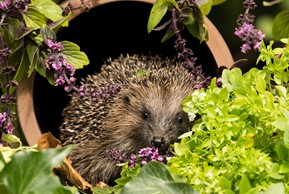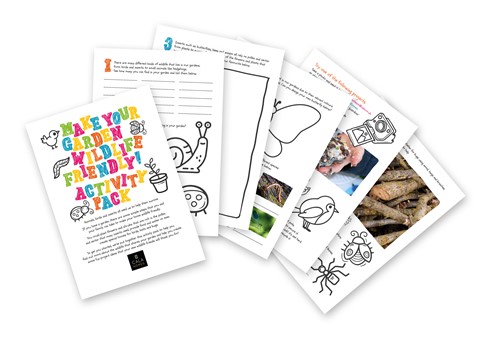Simple ways to create a Wildlife-Friendly Garden
With a significant proportion of green open space in urban areas being made up of gardens, we all have an important role to play in encouraging wildlife into our homes and creating environments in which they can thrive.
 But how easy is it to make your own outdoor space wildlife-friendly? CALA Homes has teamed up with garden designer Bev Rodway-Smith to share some simple steps we can all take to help support our local wildlife.
But how easy is it to make your own outdoor space wildlife-friendly? CALA Homes has teamed up with garden designer Bev Rodway-Smith to share some simple steps we can all take to help support our local wildlife.
CALA has also created a free downloadable activity pack with some fun projects to help encourage kids to get involved!
Bev’s Top Tips for a Wildlife-Friendly Garden:
Provide a Rich Variety of Food
Much of the food in your garden that wildlife rely on comes from flowers and shrubs, so the more you plant the better! Aim for nectar and pollen-rich varieties and choose a range of different species so that you have something flowering throughout the year. Scented plants such as Jasmine, Lavender, Clematis and Wisteria all work really well.
If you have space in your garden, why not dedicate an area to wildflower seed or cornfield bed? You could also plant a native hedgerow such as Field Maple, Hazel or Dogwood.
For our feathered friends, install bird feeders and bird tables. You can buy ready-made bird food or search the internet for some great homemade recipes ideas!
Ensure a Good Supply of Water
Water is the most important element for a wildlife-rich home. If you have the space, a small pond or bog garden is a fantastic way of attracting frogs, newts and dragonflies. A bird bath is the perfect option for smaller gardens.
Use rainwater rather than tap water in your garden, installing a butt to collect water for your bird bath and plants.
Create Natural Habitats
Animals need cover under which to move between habitats and to provide somewhere to breed. Shrubs around the perimeter of the garden provide perfect natural shelter.
You could also install nest boxes for birds, bat boxes, solitary bee boxes, bug hotels and hedgehogs houses. These are available from various websites including www.rspb.co.uk or why not make your own?
Dead and decaying wood is as important for wildlife as living wood – many insects, worms, fungi and some plants rely on dead wood for food or shelter. Creating log piles or dead wood features is a really simple and effective way of creating your own wildlife shelter. Logs can be partially buried in the ground and arranged to make standing wood feature, or laid flat in a criss-cross fashion filling gaps with old twigs, branches and leaves.
Beetles and fungi will soon come to use dead wood and add more diversity to the garden. You may also find reptiles or amphibians hiding beneath your logs!
Make your Garden Accessible
Wildlife needs to be able to move between habitats, so to really maximise the positive effects of your garden, wildlife should be able to get in and out easily. You could make a small hole at the bottom of your fence behind the shrubbery in a couple locations to allow hedgehogs and other wildlife to move from one area or garden to the next.
Go Chemical Free
Avoid using chemicals in your garden as much as possible. Use peat-free compost and, if you can, source plants that have been grown in peat-free varieties. Composting organic household waste can provide a great free source of natural fertilizer and a compost bin is the perfect location for egg laying and hibernation for some amphibians, reptiles and worms.
By adopting some simple and cost-effective ideas, we can all encourage more wildlife into our gardens; and the more we come together as a community to take collective steps, the greater the local impact will be on local wildlife. Make the changes, be patient, and our bees, birds, bats and hedgehogs will come.
To download a copy of CALA Homes’ free Gardens for Wildlife Activity Pack, visit www.cala.co.uk/activitypack.
